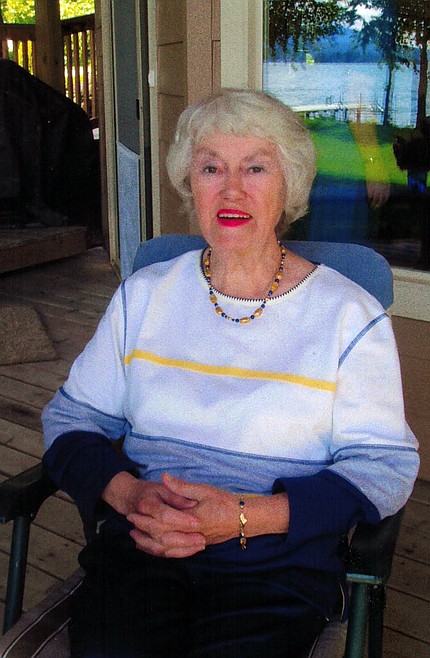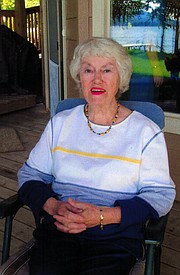‘Lost’ birds, a peanut-eatin’ buck, and a whale of a tale
In the more than 30-year residence in my little chalet-style cottage at the bottom of Schweitzer Mountain, I’ve seen many changes in the surroundings — some positive, some not so much.
One change involves song-bird visitors. Though I maintain a healthy group of seasonal residents, many have shrunken their numbers to one or two pairs and others have disappeared completely. These include meadowlarks, yellow warblers, red-wing blackbirds, ruby-crowned kinglets, goldfinches, nighthawks, wrens and Purple finches. I realize (hope) many of these have simply changed venues, since friends in the Oden area report healthy populations of at least some of them. But the reports of migrating birds dying en masse during their flights is heartbreaking.
I do believe that some songbirds — goldfinches, for instance — have simply changed their venue to a bit closer to the coast, but I fear for many others. Time will tell, I guess. Meanwhile, I pamper my sweet song sparrows, chickadees and nuthatches — and enjoy their adorable front porch antics.
One “negative” remains pretty much unchanged: The “speed lane” curve at the end of the road from Schweitzer still makes entry into (or out of) the access to the homes of we residents at the end of it. Too, it takes a toll of wild turkeys who have unfortunately chosen the curve as their crossing spot, and makes checking the mail boxes at the extreme end of the curve a hair-raising experience. Wintertime is worst, since the big plows coming down from the mountain leave berms across our little access lane — one of winter’s common problems all over town — but resident “heroes” always rectify the problem with their own plow rigs.
Over the years, one becomes attuned to the negatives and copes with them. For me, the reward of arriving at my sweet little home is worth it. I am always greeted by a gathering of birds — and yes, those big lunking turkeys — and rejoice in the cacophonic welcome.
Speaking of which, I have discovered a new “antic” in my overly healthy deer population. The little buck fawn born in my woods still thinks I am his mother — though he is now a gorgeous antlered Adonis. He comes right up to the porch to greet me (which terrifies me during hunting season) and I never try to be other than friendly to him — and his bevy of cohorts. In bad weather I toss chopped apples and carrots as far from the house as possible when they’re gone so they don’t connect it with me (silly me.) — but my “Big Guy” pal has found a new source of sustenance.
I toss peanuts around my front deck for the pine-jimmies and chickadees and one evening left a small pile on the deck bench so the night-visiting raccoons and early arriving Stellars ’Jays would have access to them. I awakened in the middle of the night to a noise outside, peeked through the drapes — and there was Adonis — on the porch — eating peanuts. Can you believe it? He was chewing them whole, discarding the shells with his tongue. I was — and am — astounded over this and wonder if anyone else has seen or heard of it. Anyhow, I still leave peanuts out for the more deserving — or whoever gets there first. C’est la vie.
In a drastic change of venue, I have yet another (to me) oddity to report. Most everyone who reads my columns know that nature in all its guises — landscape, forest, birds, wild creatures, et al — comprise my realm of interest and once in a while I come across a bit of information that is too good not to pass on.
One of the magazines I receive is “National Wildlife” from the federation of the same name: The last issue blew me away with this amazing tidbit about orcas — or “killer whales.” Research has found that they share a human characteristic that was termed “rare among mammals.” Female orcas, like human women, experience menopause around the age of 40, but live for decades as “mentors” and baby-sitters for their daughters’ calves, caring for them while the mothers fish. Young orcas thus have the comfort of “grandmas,” whose long life experiences — knowing where to find salmon, for instance — are passed on. Researchers said that so far, “menopause is known to occur only in humans, orcas and three other toothed-whale species.”
When I passed this information on to my son Grant in Kodiak, he remarked that he and wife Becky have their coffee every morning in their third-story bedroom overlooking the bay and watching the orcas leaping in the ocean. I saw them when I was there as well and appreciate this new knowledge of their lives. I truly is a wonder-full world.
A final word — repeated endlessly, I know — but so important to our fragile bird-life. Please consider helping the birds out this winter. Augment your sunflower seed feeders with nourishing things — apple cores, dried corn on the cob, peanut butter in pinecones or slathered on the tree bark and peanuts in the shell for visiting jays (and mooching deer.). Too, suet feeders provide needed extra protein and are a great inexpensive way to provide some “heat” to small bird bodies. If you’re really into helping out the birds (and probably an opportunistic pine jimmy or two) you can create some pretty hearty mixtures to stuff into pinecones, tree bark or in a container of your choice. And don’t forget shelter. Bird houses and woven straw nests that hold a few birds together for warmth are great wind blockers as well. It’s our way to “give back” the delights these little “life-brighteners” offer.
Valle Novak writes the Country Chef and Weekend Gardener columns for the Daily Bee. She can be reached at bcdailybee@bonnercountydailybee.com. or by phone at 208-265-4688 between the hours of 8 a.m. to 7 p.m.



